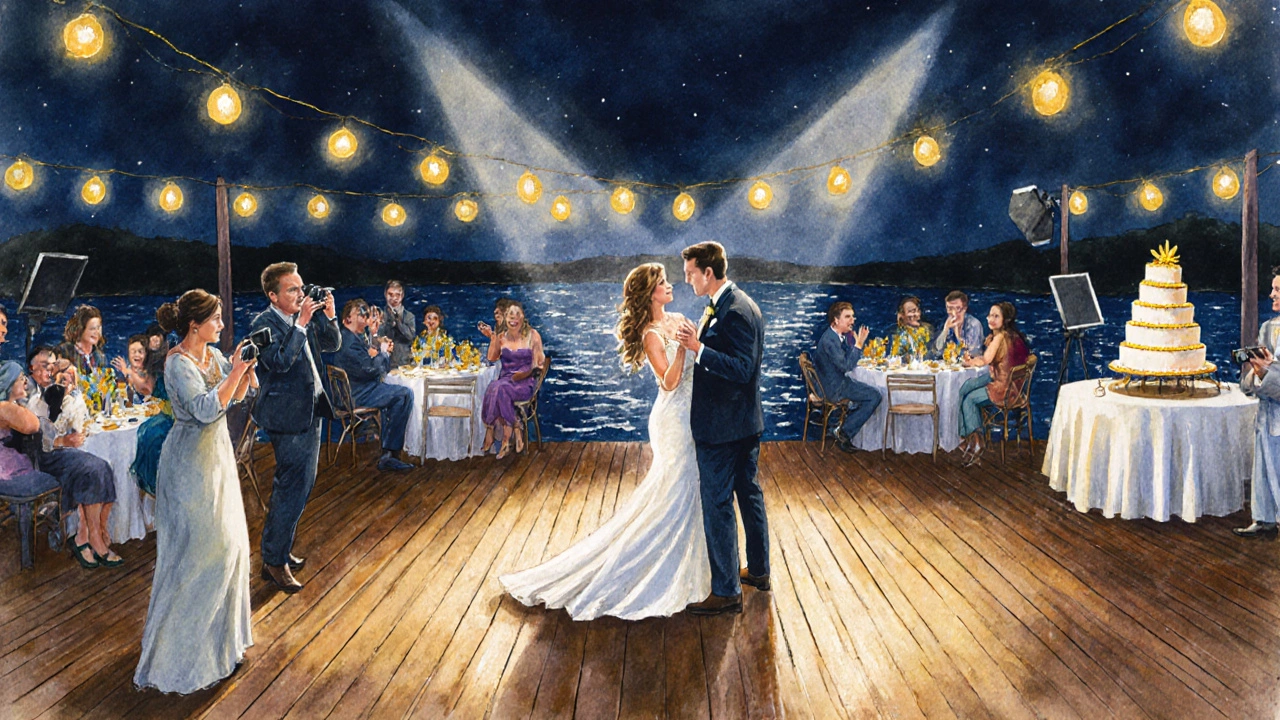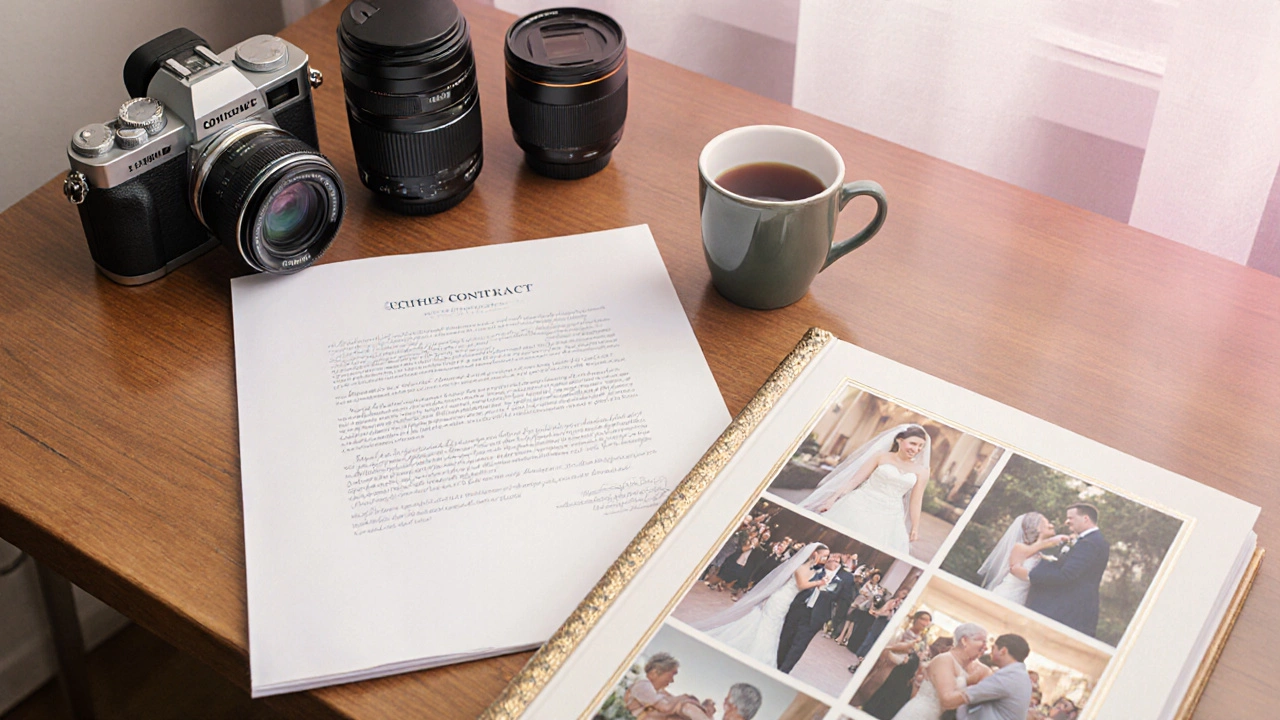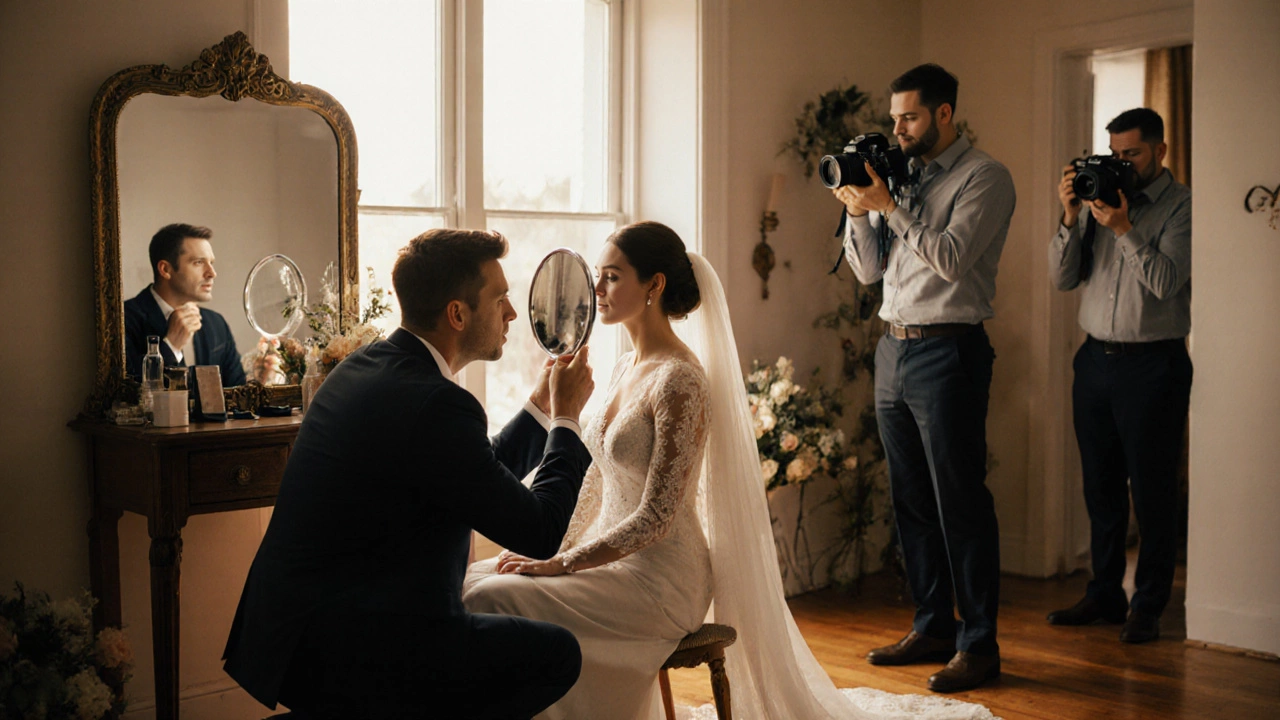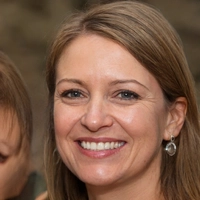Wedding Photography Coverage Calculator
Find Your Perfect Coverage Package
Answer these questions to determine the best photography coverage for your wedding day.
Recommended Coverage Package
Coverage Comparison
Full-Day Coverage
Starts early (2-3 hours before ceremony) and ends after the last dance
Best for couples who want complete coverage of all wedding events
Partial Coverage
Covers ceremony and first hour of reception
Good for couples who don't need after-party coverage
Hourly Coverage
Choose specific hours for coverage
Ideal for couples who only want coverage for specific events
Many couples wonder if the wedding photographer remains on site for the entire ceremony and reception or only shows up for key moments. The short answer is: it depends on the contract, the photographer’s style, and how you structure your wedding day timeline.
What "stay the whole wedding" actually means
When you ask a photographer whether they "stay the whole wedding," you are really asking two things:
- Will the lead photographer be present from the start of the ceremony through the last dance?
- Will any backup crew be on hand to capture moments when the lead steps away?
Most professionals define "whole wedding" as coverage that starts with the ceremony (or even the pre‑ceremony preparations) and ends when the reception finishes, typically around the first hour after the cake cutting. Anything less is usually labelled as "partial" or "hourly" coverage.
Typical coverage options offered by photographers
Photographers usually present three standard packages:
- Full‑day coverage Starts early (often 2-3 hours before the ceremony) and ends after the last dance.
- Partial coverage Covers only the ceremony and the first hour of the reception.
- Hourly coverage Allows you to pick specific blocks of time, such as the ceremony only.
Choosing the right option hinges on three questions:
- Which moments matter most to you?
- What is your budget?
- How long is your itinerary?
How a typical wedding day is scheduled for photography
The photographer’s schedule mirrors the wedding timeline. Below is a common flow for a 10‑hour event:
- 08:00‑10:00 - Pre‑ceremony prep: The lead photographer captures bridal hair, makeup, and the groom getting ready. If a second shooter a backup photographer who works alongside the lead is booked, they often handle the groom’s side.
- 10:30 - Ceremony start: Full‑day coverage ensures the photographer is in place for the aisle walk, vows, and ring exchange.
- 11:30 - Post‑ceremony portraits: The team splits - one captures the couple’s formal portraits, the other documents family shots.
- 13:00 - Reception begins: The photographer moves to the venue, shooting décor, guest arrivals, and the first toast.
- 15:00 - Key moments: Cake cutting, first dance, speeches - these are the highlights that most couples prioritize.
- 17:00 - Party time: Candid shots of guests dancing, celebrations, and any surprise performances.
- 19:00 - Wrap‑up: The photographer usually stays until the last song, then packs up equipment.
Notice how the timeline includes buffers for travel, equipment changes, and unexpected delays. A assistant photographer helps with lighting, gear, and backup storage during busy periods can keep the flow smooth.

Team roles: lead, second shooter, and assistant
Understanding each role clarifies why many photographers appear to "stay the whole wedding":
- Lead photographer - the creative director. They decide composition, lighting, and key moments.
- Second shooter - provides extra angles, covers simultaneous events (e.g., brunch ceremony and pre‑reception cocktail).
- Assistant photographer - not an independent shooter but handles logistical tasks: setting up flashes, swapping batteries, and backing up files on the spot.
When you hire a full‑day package, the contract typically lists who will be on site and for how long. Some studios send only the lead photographer for a short ceremony and rely on a second shooter for the reception, saving you money while still covering the whole day.
Pros and cons of full‑day presence
| Aspect | Full‑day coverage | Partial coverage |
|---|---|---|
| Moments captured | All ceremony, reception, candid party moments, first dance, cake cutting, late‑night celebrations | Only ceremony and early reception (usually up to the first dance) |
| Photographer fatigue | Higher - requires breaks; second shooter mitigates fatigue | Lower - shorter shift |
| Cost | Higher - longer hours, often includes second shooter and assistant | Lower - fewer hours, fewer staff |
| Post‑wedding deliverables | More images, broader story, better album flow | Fewer images, may need a separate photographer for missing parts |
In a nutshell, full‑day coverage gives you a complete visual narrative, but it costs more and requires more stamina from the crew. If your budget is tight, partial coverage can still work if you pinpoint the moments you can’t live without.
How to make sure you get the coverage you need
Ask these key questions during the consultation:
- What exact start and end times are included in the package?
- Who will be on site, and for how many hours each?
- Do you provide a written photographer contract that outlines deliverables, timeline, and cancellation policy?
- Can you see a sample timeline from a recent wedding similar to ours?
- What is your backup plan if equipment fails or a team member is unavailable?
Once you’ve clarified these points, put everything in writing. A solid contract protects both you and the photographer, and it makes sure expectations are aligned.

Real‑world example: An Auckland wedding
Sarah and James booked a full‑day package with a local studio in Auckland. Their day looked like this:
- 07:30 - Photographer and second shooter arrive at the bride’s house for hair‑and‑makeup shots.
- 10:00 - Ceremony at St. Mark’s Church, captured by the lead photographer.
- 11:00 - Reception set‑up at a waterfront venue; assistant photographer handles lighting rigs.
- 12:30 - Lunch‑style cocktail hour, with the second shooter roaming for candid guest photos.
- 14:00 - Formal portrait session on the pier.
- 15:30 - Reception begins, cake cutting, and toasts recorded by the whole team.
- 18:00 - Party continues; the lead photographer stays for the final dance while the assistant backs up files.
- 19:30 - The crew packs up, leaving the couple with over 1,200 high‑resolution images.
The couple later said they loved having a "complete story" because they got moments they didn’t even realize were happening - like the grandparents' quiet hug during the cocktail hour.
Post‑wedding workflow you should expect
After the event, the photographer moves into the editing phase. Typical steps include:
- Backup all raw files on two separate drives (this is part of the post‑wedding editing the process of culling, color correcting, and retouching).
- Create a highlight reel of 30-50 curated images for social sharing.
- Design a photo album a printed collection that tells the day’s story or a digital gallery.
- Deliver the final files within 6-8 weeks, unless a fast‑track option is purchased.
If you notice a delay beyond the agreed timeline, reach out early - most photographers are happy to give you a status update.
Bottom line
Answering the original question: yes, a professional wedding photographer can stay for the whole wedding, but only if the contract you sign includes full‑day coverage and the appropriate team members. Knowing the different packages, understanding the photographer’s day‑by‑day schedule, and asking the right contract questions will ensure you get the coverage you deserve without surprises.
Do I need a second shooter for full‑day coverage?
A second shooter isn’t mandatory, but they add valuable redundancy and capture simultaneous moments, especially at larger venues or multi‑site weddings.
What’s the difference between "full‑day" and "extended" coverage?
Full‑day usually means from the start of preparations to the end of the reception (about 10‑12 hours). Extended coverage adds extra hours beyond that, such as a post‑reception after‑party.
Can I hire a photographer just for the ceremony?
Yes, many studios offer ceremony‑only packages. Expect a shorter contract, fewer edited images, and a lower price.
How far in advance should I book my photographer?
Popular venues in Auckland book out 12‑18 months ahead, so aim for at least a year before your wedding date.
What happens if the lead photographer gets sick on my wedding day?
A reputable studio will have a backup lead photographer who can step in with minimal disruption. This contingency should be spelled out in the contract.

